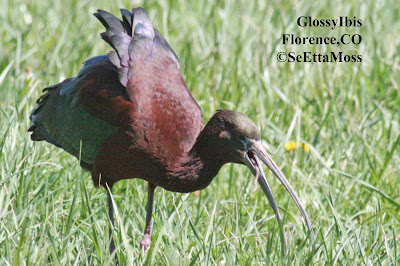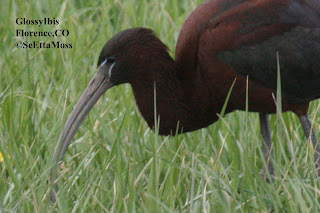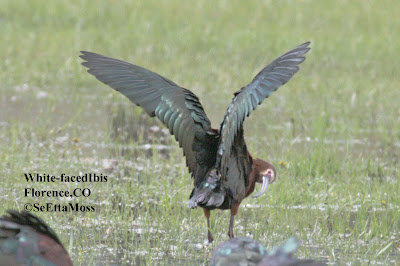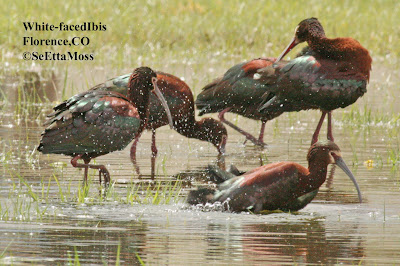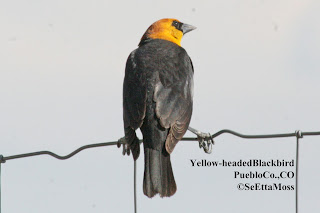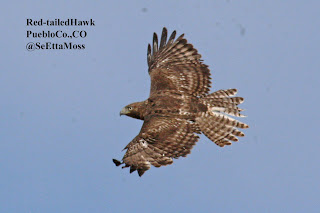White-faced Ibis shows off underwing feathering

I can only think that this White-faced Ibis was trying to either dry off it's wings or engage in 'sunning' behavior as it lifted it's wing and spread it for a view of the underwing plumage not often seen. This bird's head feathers are standing out as though wet so it may have done some bathing in the water standing in the field. I did no editing other than to crop this pic either so the greenish tinge to the top part of the underwing is how these feathers appeared. SeEtta





